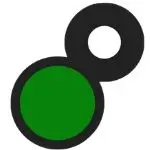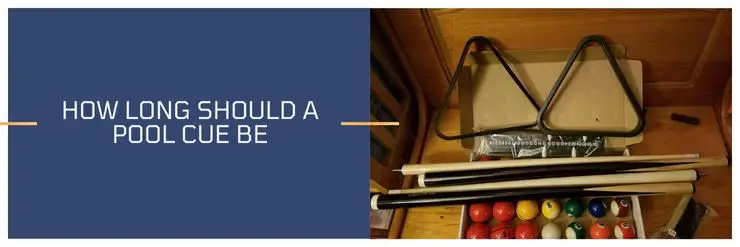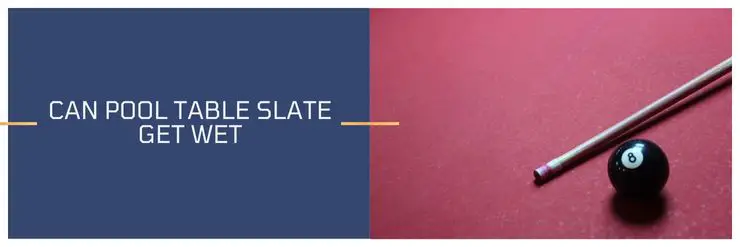When you consider the design of most sports played in this day and age, a lot of them tend to be rather intuitive. Put a person on a soccer field with a soccer ball and they are pretty likely to figure out that the ball goes into the net, even if they do not know they are only allowed to use their feet.
Pool is a different story though. Given a pool cue and an assortment of pool balls and a pool table, the player is likely to discern that they are meant to use the cue to put the balls in the holes. What they might not figure out intuitively is the meaning of the pool balls’ colors and the fact that there are rules related to them.
Pool balls are either colored a solid color for the balls numbered 1 through 8, or colored with a stripe for balls numbered 9 through 15. Balls 1 through 7 are each have a unique color, as do balls 9 through 15. The 8 ball is pure black. Then there is the non-numbered, pure white cue ball.
Without instructions telling you how to set them up, how would you know the difference in how the 8 ball is meant to be used as compared to how the cue ball is meant to be used?
Pool ball Colors and Design
As mentioned before, balls numbered 1 through 7 each have a unique color. They are the colors of the rainbow (though indigo is replaced with burgundy to keep indigo from being confused with blue or green), which means that every ball is immediately, visually distinct. Even if you cannot see the number, you can see the color.
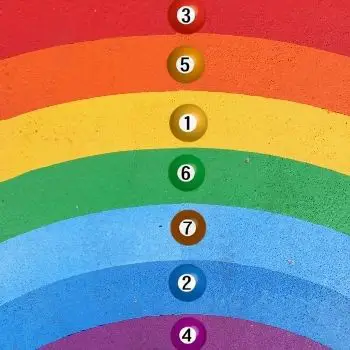
This serves as the first part in a two-part game design element of pool. Imagine if the balls had no color at all. If they were all the same color, even if they were numbered, then the amount of information that would have to be explained and tracked outside of the game would be more than triple what it currently is.
As you can see from the image above, the pool ball colors are:
1 and 9 = Yellow
2 and 10 = Blue
3 and 11 = Red
4 and 12 = Purple
5 and 13 = Orange
6 and 14 = Green
7 and 15 = Burgundy
Single digits are solids while double digits are stripes.
Without the colors, pool would simply not work. Colors, numbers, and billiard ball type determine which balls you play for without these factors you simply couldn’t play pool.
Next time someone asks you “What color is the 4 ball in pool” or “what color is the 9-ball in pool” you should know, but if you forget you can always bookmark this page!
Pool ball Numbers and Design
Earlier it was mentioned that the colors of the pool balls relate to the numbers. This is true, and it bears expanding on: Numbers 1 through 7 are solid, while numbers 9 through 15 are striped. Each ball in the sequence has the same color. This is easier to observe than explain.
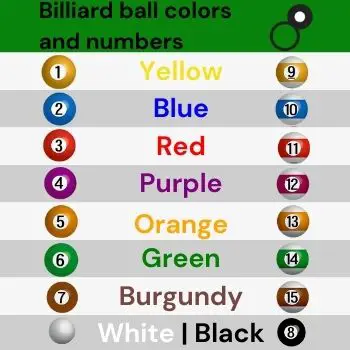
If you wanted to know what color is the number 2 ball in pool, you can see from the above image the 2 ball in pool is a solid blue color.
This means that:
Both the solid ball #1 and the striped ball #9 are yellow.
Both the solid ball #2 and the striped ball #10 are blue.
Every solid ball shares a color with a striped ball. But why is this valuable? Well, there are two reasons. The first has to do with deepening the game of pool, while the other has to do with accessibility.
A rule that is employed commonly, but not universally, is the rule of “calling your shot” in pool. This is where the classic “8 ball, corner pocket” line comes from. The idea is that in order to get credit for sinking a ball, you must demonstrate that you did it on purpose. The best way to do this is by calling the shot ahead of time.
Without the numbers, this rule would be impossible. And this rule is important, as it separates the experience of both playing and watching high-level pool from the experience of playing and watching normal people play the game. Some people will not take a game seriously unless it has such methods of skill expression.
The second thing that makes the numbers not only helpful but important is accessibility. Imagine you are a pool master. You can sink any shot, no matter how improbable. You know all the tricks to landing all the shots. But then one day you wake up colorblind. You cannot tell your balls from the opponent’s.
This is obviously a ridiculous scenario but discards the fiction of being a god of pool and focus on the colorblindness. Why should colorblindness get in the way of playing pool?
There are circumstances where colorblindness is dangerous. You cannot become a pilot while colorblind. But pool is not a test of one’s eyesight. In fact, there have been blind masters of pool before. But in the cases of both blindness and colorblindness, those disabilities are not related to pool’s essential skills.
The numbers on pool balls make sure that even if you have never perceived a color before, you can still play the same game as everyone else. The game is not watered down or reduced by this layer of design. In fact, it is improved by it since it allows people to call their shots. This is why the color and numbers are important.
Wrap Up
So, what are the pool ball colors and numbers? The color range is mirrored on the opposite ball, for example, ball 1 which is a solid yellow ball is also the same as ball 9 which is a yellow striped ball.
The numbers range from 1 through to 15, with the black ball being the 8 ball and the white not being numbered.
Rob is an avid player and fan of all cue sports, particularly 8-ball, and snooker. He has competed in a few local 8-ball tournaments and although he is not a professional, he can compete with the best of them.
